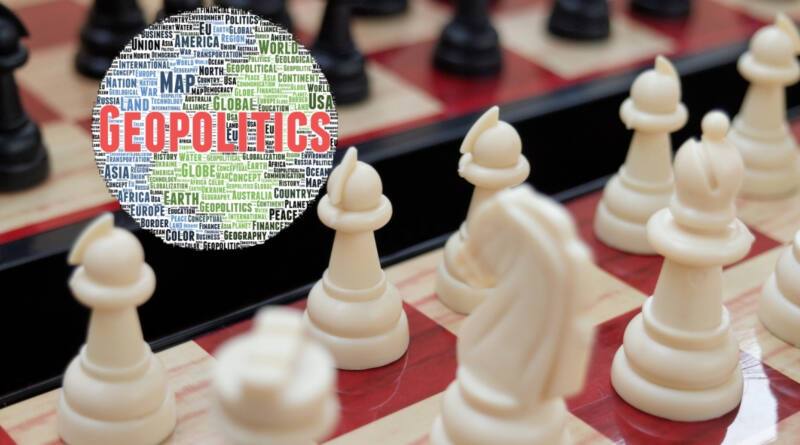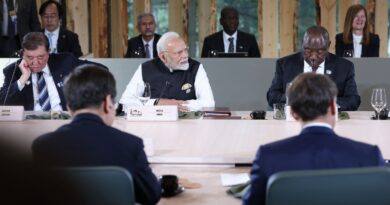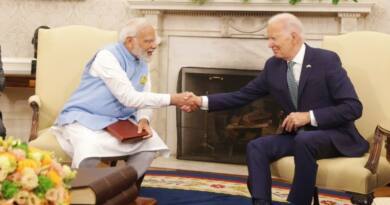India’s Role: Know The Interesting Geopolitics Of The Indo-Pacific Region
In recent years, the phrase “Indo-Pacific” has acquired traction in international relations and security discussions, reflecting the region’s growing economic and geopolitical importance, particularly as the global balance of power moves towards Asia.
What exactly defines the Indo-Pacific region?
The Indo-Pacific region is large, encompassing the Indian Ocean, the Western and Central Pacific Oceans, and the seas that connect them.
It is a geopolitical construct that replaces the phrase “Asia-Pacific.” It extends from Africa’s east coast to America’s west coast, incorporating the Indian and Pacific oceans.
Major stakeholders in the Indo-Pacific include QUAD (India, the United States, Australia, and Japan), ASEAN countries, China, and other maritime nations with vital positions in the Indian and Pacific Oceans.
Indo-Pacific
Geopolitics of the Indo-Pacific
Geopolitics in the Indo-Pacific area is the interaction of geography, politics, and power as a result of its strategic location near the world’s busiest shipping lanes, critical sea lines of communication, and important natural resources.
The region’s geopolitical dynamics are complex and multifaceted, with competing interests between major powers such as the United States, China, Japan, India, and Australia, as well as other regional powers such as Russia, South Korea, and Indonesia, driven by security, economic factors, cultural ties, historical relationships, and domestic politics.
The main challenge in this region is the rivalry for power and influence between the United States and China, sometimes known as the “Thucydides trap.”
This describes the historical pattern of warfare that occurs when a rising power challenges a dominant power.
This competition is taking place in a variety of forms, including military buildups, economic projects like China’s Belt and Road Initiative, and diplomatic efforts like the Quadrilateral Security Dialogue (QUAD), which brings together the US, Japan, India, and Australia.
Other major geopolitical challenges in the region include territorial conflicts in the South China Sea.
Significance of the Indo-Pacific
The Indo-Pacific region is a critical global area due to its large population, massive economic production, and richness of natural resources. The regional significance can be explored in the following dimensions:
Economic: The Indo-Pacific area is one of the world’s most active and vigorous economies, accounting for a sizable share of global GDP and commerce.
The region is home to several of the world’s greatest economies, including the United States, China, Japan, India, and Australia, as well as a number of growing economies.
Because of its large consumer market, strategic position, and competitive labour costs, the region is a popular destination and source of foreign direct investment (FDI).
Various initiatives, such as the Regional Comprehensive Economic Partnership (RCEP), the Comprehensive and Progressive Agreement for Trans-Pacific Partnership (CPTPP), and the Belt and Road Initiative (BRI), have helped to strengthen the region’s commercial linkages and integration.
Security: Because of its strategic location and the presence of numerous security issues, the Indo-Pacific region is also an important area for global security.
The region has some of the world’s busiest shipping routes and critical maritime lanes of communication, making it an important hub for global trade and energy movements.
Territorial disputes, piracy, terrorism, cyber threats, and non-traditional security challenges such as climate change, pandemics, and environmental degradation are all issues that the region must address.
Environmental dimension: The Indo-Pacific region is home to some of the world’s most diverse and vulnerable ecosystems, such as coral reefs, mangroves, and rainforests.
However, the region faces a number of environmental issues, including climate change, ocean acidification, pollution, and overfishing. These difficulties not only pose serious environmental hazards, but they also have economic and social consequences for the region’s residents, particularly those that rely on fisheries and other natural resources.
Geopolitical dimension: The Indo-Pacific region is also characterised by complex geopolitical dynamics, including rivalry and cooperation between important nations like the United States, China, and India, as well as various regional groups like ASEAN and the QUAD.
The region is also the subject of several territorial conflicts, especially in the South and East China Seas.
These geopolitical factors affect the region’s security, stability, and economic development.
The geopolitical interests of nations in the region
Global countries’ geopolitical interests in the Indo-Pacific region
United States: The United States prioritises the Indo-Pacific region in its foreign policy, with the goal of maintaining a free and open Indo-Pacific that is beneficial to American interests.
The United States has substantial security interests in the region, including preserving freedom of navigation, combating Chinese assertiveness, and safeguarding regional peace.
The United States also aims to strengthen economic links with the area, especially through the Comprehensive and Progressive Agreement for Trans-Pacific Partnership (CPTPP) and the Blue Dot Network programme.
China’s interests in this region revolve around its “nine-dash line” claim, which asserts territorial claims over much of the South China Sea, including islands and reefs claimed by other countries in the region.
This has been a major source of tension in the region, with other countries such as Vietnam, the Philippines, Malaysia, and Brunei claiming portions of the ocean.
Furthermore, China has made significant investments in infrastructure development in these areas, including the Belt and Road Initiative, which aims to connect China to other parts of Asia, Europe, and Africa via a network of roads, railways, ports, and other infrastructure projects.
China also aims to undermine US dominance in the region by establishing its own vision of regional order.
India: India has important economic and security interests in the Indo-Pacific area, including resisting Chinese assertiveness, strengthening economic connections with ASEAN and other allies, and guaranteeing regional stability.
India is an important member of the QUAD, which seeks to promote a free and open Indo-Pacific, and has promoted initiatives such as the Act East Policy and the International Solar Alliance to strengthen connections with the region.
Japan: Japan aims to offset Chinese assertiveness, strengthen economic connections with the area, and support regional security and stability.
Japan is an important member of the QUAD, and it has undertaken projects like the Partnership for Quality Infrastructure and the Free and Open Indo-Pacific Strategy to advance its interests in the region.
Australia is a crucial member of the QUAD, and it has promoted projects such as the Pacific Step-Up and the Indo-Pacific Endeavour to strengthen its ties with the region.
ASEAN countries have also pursued initiatives, such as the ASEAN Outlook on the Indo-Pacific, to promote their own vision of regional order.
Conventions for the Indo-Pacific Region
There are various laws and conventions linked to the Indo-Pacific region, such as:
The United Nations Convention on the Law of the Sea (UNCLOS) is a global convention that establishes regulations for the use and management of the world’s oceans and resources. Many countries in the Indo-Pacific area, including China, Japan, India, and Australia, have signed and ratified UNCLOS.
The Association of Southeast Asian Nations (ASEAN) operates under a legal framework known as the ASEAN Charter. ASEAN is a regional organisation of ten Southeast Asian countries that promotes peace, stability, and economic cooperation in the Indo-Pacific area.
Joint Communiqué of the US-India Defence Ministers’ Meeting: This joint communiqué was signed in 2020 by the defence ministers of the United States and India. It establishes a framework for defence, security, and strategic cooperation between the two Indo-Pacific countries.
The Quadrilateral Security Dialogue (Quad) is an informal strategic forum comprising the United States, Japan, India, and Australia. The Quad seeks to promote regional security, economic development, and freedom of navigation in the Indo-Pacific.
India and the Indo-Pacific
The significance of the Indo-Pacific for India
Economic:
According to a recent WEF analysis, this region accounts for one-third of global economic output, the most of any region.
The WTO estimates that this region contributes to more than one-third of worldwide foreign commerce.
Marine Resources:
The blue economy provides more than 4% of India’s GDP.
The Indo-Pacific region is critical to India’s interests due to its abundance of resources such as oil, gas, PMNs, methane hydrates, rare earth metal exploration, and so on.
Maritime Trade:
The Indo-Pacific area accounts for half of global trade and 90% of Indian trade.
Nearly 55% of India’s trade with the Indo-Pacific area goes through the South China Sea.
India’s significant regional trading partners include ASEAN, China, Japan, the United States, and Australia.
Trade with major Indo-Pacific economies was $262 billion in 2020, with the United States being the largest trading partner. Strategic
Maritime security:
Sea-borne terrorism, maritime piracy, maritime disputes, and flashpoints such as the South China Sea (SCS) make the Indo-Pacific area critical for maritime security.
The African Outreach:
The Western Indian Ocean Region (WIOR) is a strategically important region since it is located at the crossroads of Asia, Africa, and Europe.
For India, the region is part of its vital maritime boundary, which stretches from the Persian Gulf to Africa’s east coast via the Malacca Strait.
Strategic marine chokepoints include the Gulf of Aden, Bab-el-Mandeb, and the Mozambique Channel.
The Indo-Pacific area complements India’s growing outreach to African countries and strengthens the Indian Navy’s position as a regional security partner.
The China Challenge: China’s ambitious military preparations and infrastructural endeavours under the Belt and Road Initiative (BRI), as well as border conflicts, have prompted India to seek a larger role in the Indo-Pacific region.
India faces challenges in the region.
Geo-Strategic Competition: The Indo-Pacific is the primary arena for geostrategic competition among several international institutions, such as QUAD and the Shanghai Cooperation Organisation (SCO).
China’s Radical Militarization: China has posed a threat to India’s interests and stability in the Indian Ocean. China is providing military and infrastructure support to India’s neighbours, including submarines for Myanmar, frigates for Sri Lanka, and an offshore military facility in Djibouti (the Horn of Africa).
China also controls Hambantota port (Sri Lanka), which is just a few hundred kilometres off the coast of India.
Non-Traditional Issues Hotspot: The breadth of the region makes it difficult to analyse and address a variety of hazards, including piracy, trafficking, and terrorism.
Climate change, as well as three consecutive La Niña occurrences bringing cyclones and tsunamis, pose significant threats to the Indo-Pacific region’s geographical and ecological stability.
Illegal, unregulated, and unreported (IUU) fishing, as well as marine pollution, are harming the region’s aquatic biodiversity.
India’s restricted naval capacity: Due to the Indian military budget’s restricted allotment, the Indian Navy has few resources and capacity to boost its efforts. Furthermore, the lack of overseas military sites poses a significant logistical difficulty for India in maintaining its presence in the Indo-Pacific.
India’s Initiatives to Fully Use the Potential of the Indo-Pacific
In April 2019, the Ministry of External Affairs established a new Indo-Pacific Division.
Indian-Pacific Oceans Initiative (IPOI): It focuses on a joint effort to improve maritime management, conservation, sustainability, and security.
It envisions collaboration based on seven pillars: marine security, maritime ecology, maritime resources, capacity building and resource sharing, disaster risk reduction and management, science, technology, academic cooperation, trade, connectivity, and maritime transit.
Regional and Bilateral Groupings: We have increased our bilateral involvement with individual Indo-Pacific countries, including ASEAN members, as well as the QUAD system at the regional and plurilateral levels.
ASEAN Centrality: India’s ties to ASEAN have grown stronger. This development is consistent with India’s aim of positioning ASEAN at the core of the Indo-Pacific. The IPOI is an ideal complement to the ASEAN Outlook on the Indo-Pacific (AOIP), which was adopted in 2019.
India has made the decision to join the United States-led Indo-Pacific Economic Framework (IPEF) in terms of economics.
It is a US-led trade initiative aimed at countering China’s aggressive development in the region, and it includes seven of the ten ASEAN members, all four Quad countries, and New Zealand, which account for around 40% of global GDP.
The Indo-Pacific Marine Domain Awareness Initiative focuses on marine safety, illicit, unreported, and unregulated (IUU) fishing, and the impact of natural catastrophes. This effort has the potential to close a number of regional gaps.
Continental initiatives, such as the India-Myanmar-Thailand Trilateral Highway, have the potential to establish an entirely new axis of economic activity in Asia.
Security and Defence: India has established partnerships with countries in the region to deliver defence training courses and exercises.
The Indian Navy’s Information Fusion Centre for the Indian Ocean Region has raised marine domain awareness in partner countries.
The Indian Ocean Naval Symposium promotes mutual awareness of marine concerns and a collaborative approach among the region’s 35 warships.
Exercises such as Malabar in the maritime realm can be regarded as a step forward for India.
Humanitarian aid and disaster relief: India has established itself as an early responder through programmes such as the Coalition for Disaster Resilient Infrastructure and the International Solar Alliance.




